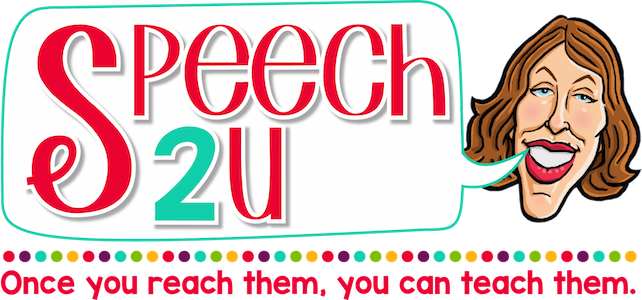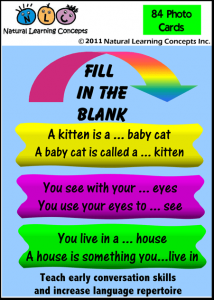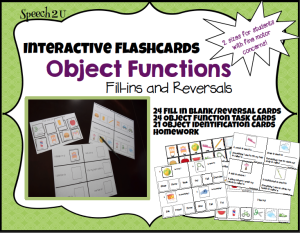I am probably sitting in a hot tub right now surrounded by some elderly people who wish my son would stop talking. We are visiting my mom in Arizona. While I am away, I thought I would update and repost some of my popular posts related to Autism.
******************************************************************************************************************
Echolalia refers to when a child repeats a vocalization or something that has just been said. Echolalia can be immediate or it can be delayed. An example of Immediate Echolalia would be:
Client: I said put your pencils down right now!
One of my favorite resources is Natural Learning Concepts: Fill in the Blank Cards.
I wish there were a few more basic cards in this set, but I love the size and the fact that they are coated, making them very durable.
You can also check out my Interactive Flash cards: Fill in the Blank/Reversals product. It is on sale through April 11th.




I’m glad you reposted this! I need these!!! 🙂
Is a 3 year old who uses echolalia frequently always on the autism spectrum? Or could they just have a language delay? Does language impairment always put a child on the spectrum even if there are no other symptoms of autism!
Those are good questions. Echolalia can also occur when children are learning language-or not understanding the question/sentence. I don’t think a child would be diagnosed with autism based on just using echolalia. They psychologist would look at the whole child including eye contact, patterns of interacting, joint attention etc. If there are concerns, I would recommend an assessment. While it is scary to think that a child may get a diagnosis, there are so many things that professionals can do to help and the earlier the intervention, the better the long term outcomes.